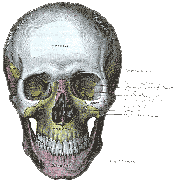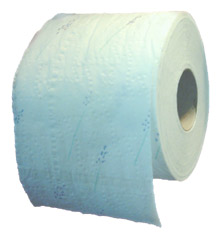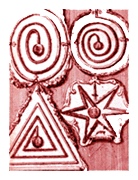



In the age of chaos theory and fractal geometry, mathematics is no longer as bleak and boring as it once was considered. Today, exciting new concepts in mathematics escape the confines of nerdy formulae to live and breathe in the world around us. Their beauty and wonder is reflected in the grains of sand of an ever-changing shoreline, the corkscrew eddy created when cream is stirred into your morning coffee, and yes, even in the cottony-cushioned pattern on a roll of toilet paper.
Which brings us to one of the characteristic perils you might run up against when dallying in these latest breakthroughs in mathematical science: unlike the Sir Isaac Newtons of the past, the people who invented this stuff are still around to sue your pants off.
In April 1997, Sir Roger Penrose, a British mathematician who has worked with Stephen Hawking on topics such as relativity, black holes, and whether time has a beginning, filed a lawsuit against the Kimberly-Clark Corporation for copyright- infringement. Penrose said a pattern he created was used for the quilting of Kleenex brand toilet paper.
Now this is where you might ask yourself "What could be so special about some silly pattern on toilet paper?" A considerable amount, actually. Sir Roger Penrose, one of the notables of modern science recognized for researching the beginnings of the universe, also has a longstanding interest in tessellation geometry, which involves determining sets of fixed polygons that can fit together like the pieces of a jigsaw puzzle.
Penrose discovered irregular patterns that had never been seen in human history. They did not predictably repeat, yet formed reliable patterns indefinitely ( an illustration of five-fold symmetry, which was thought to be impossible). To make the discovery all the more profound, his discoveries didn't come courtesy of the massive abilities exhibited by modern day computers; these patterns belong to a bizarre set of "non-computable" problems that must be solved by hand.
Widely known in the geometry field as "Penrose tilings," the particular pattern Penrose found on the toilet paper, is notable for using only two polygons to cover a surface. A thin diamond and a thick one form an eternal interlocking field of five-pointed stars and decagons.
The question is raised, though, as to the factuality of Penrose's allegation. The design used on the toilet paper couldn't be an exact replica. It must have repeated itself in some sort of regular pattern in order to have been mass-produced in 500-sheet rolls. Thus it couldn't be more than a distant relative to the Penrose original, which is renowned for never repeating itself.

Stranger than Fiction Magazine is your premier source for tales of the bizarre and extraordinary. Published quarterly. Established 2004.
Summer 2004 issue (here)
